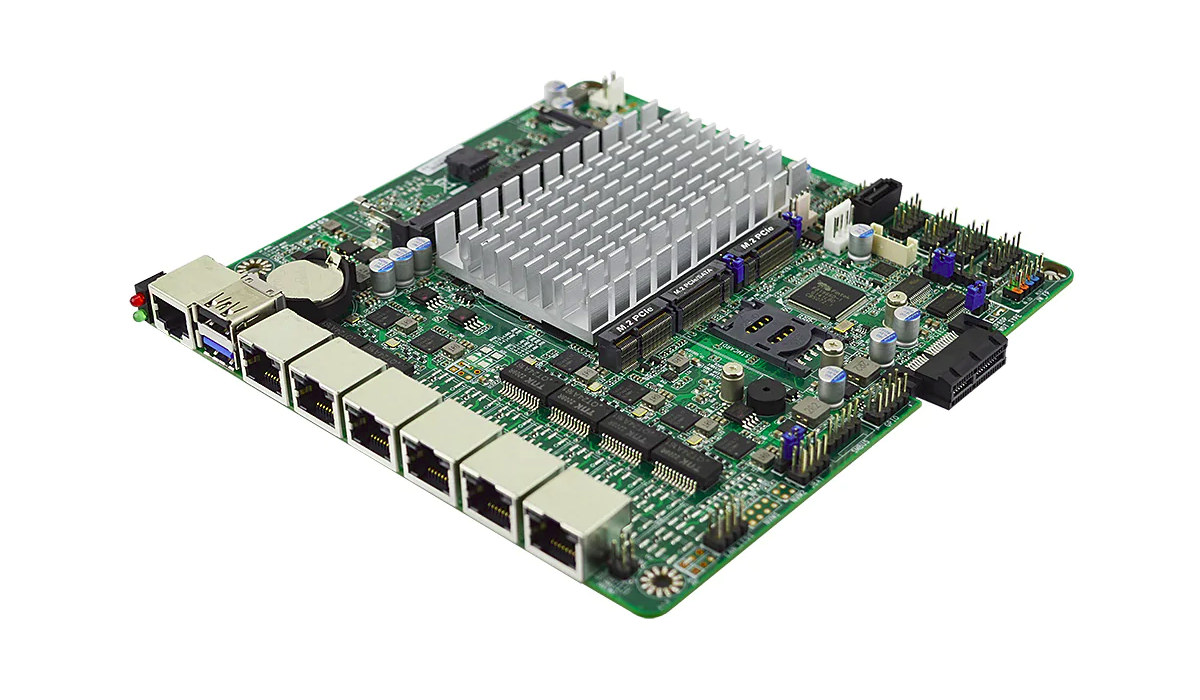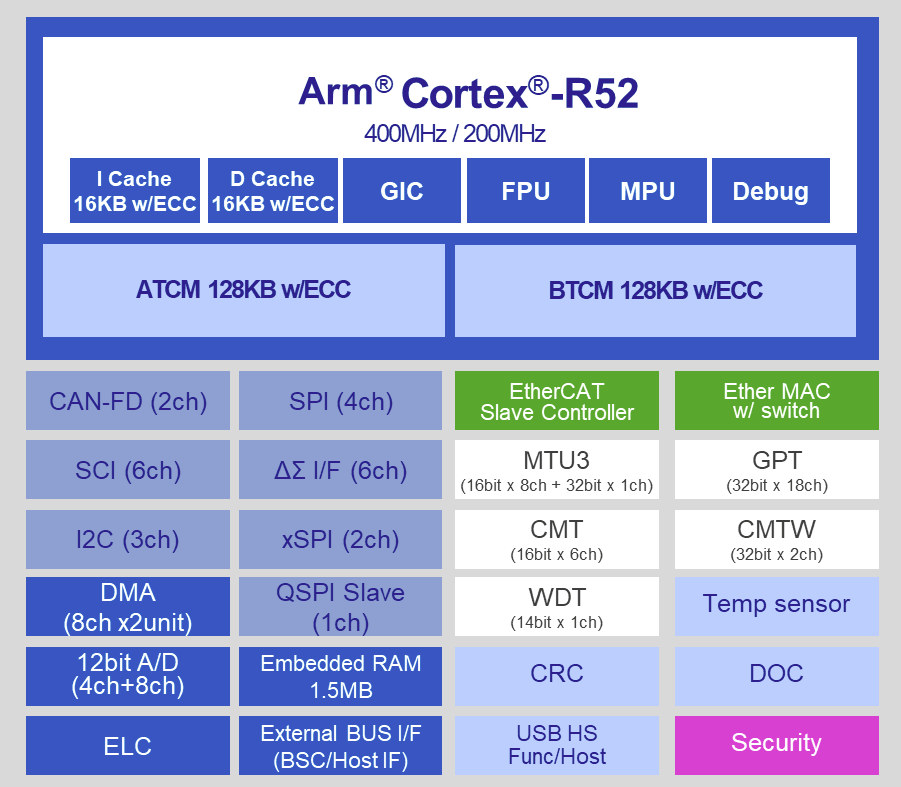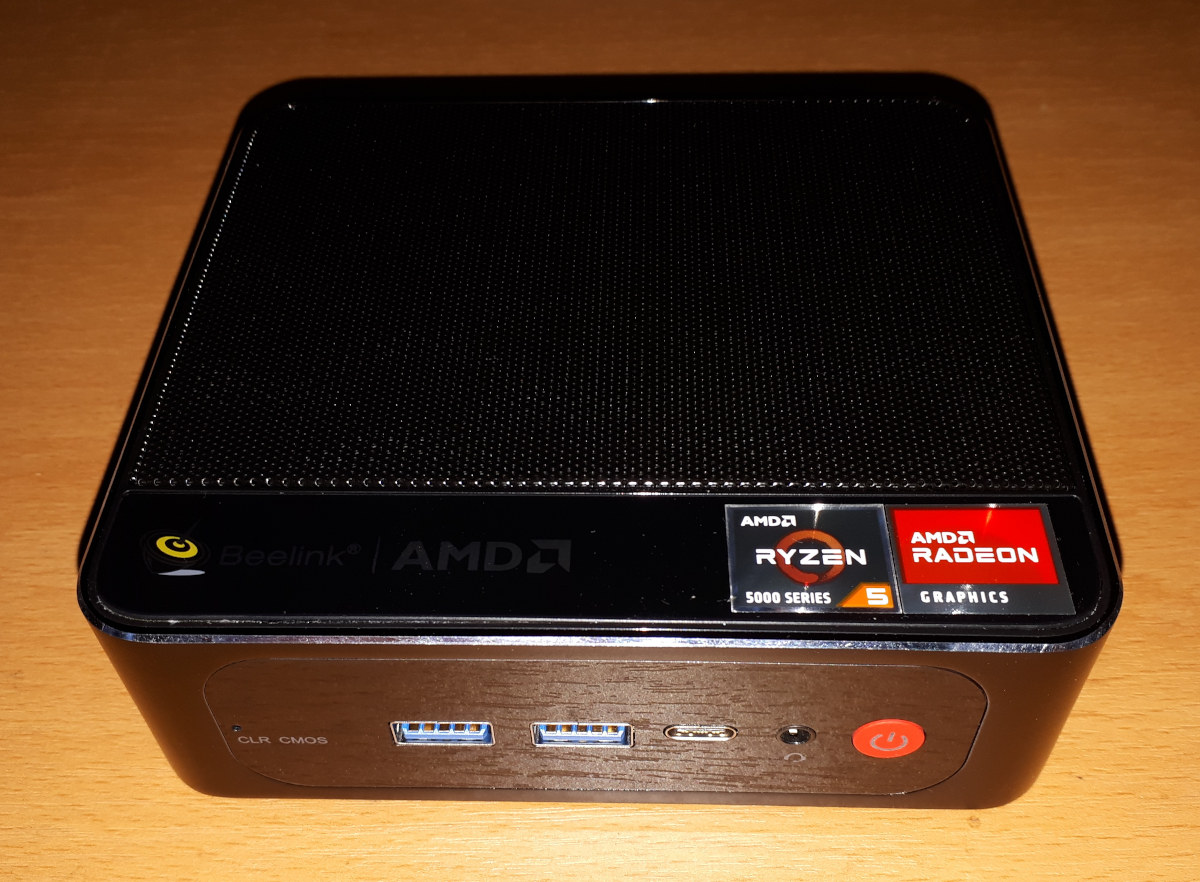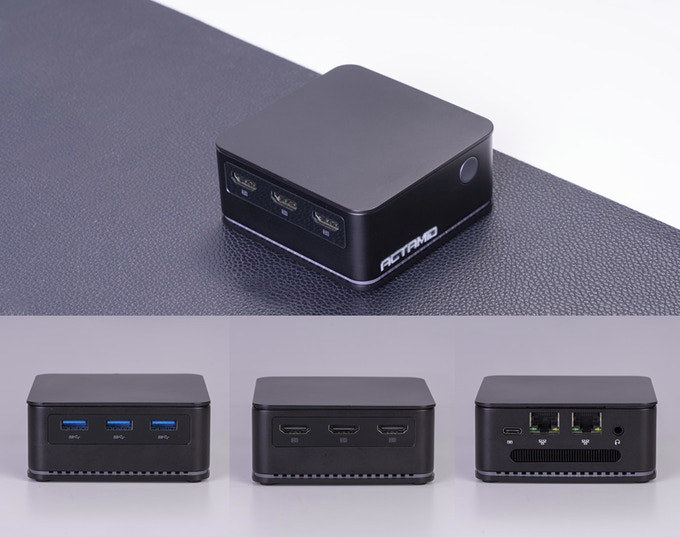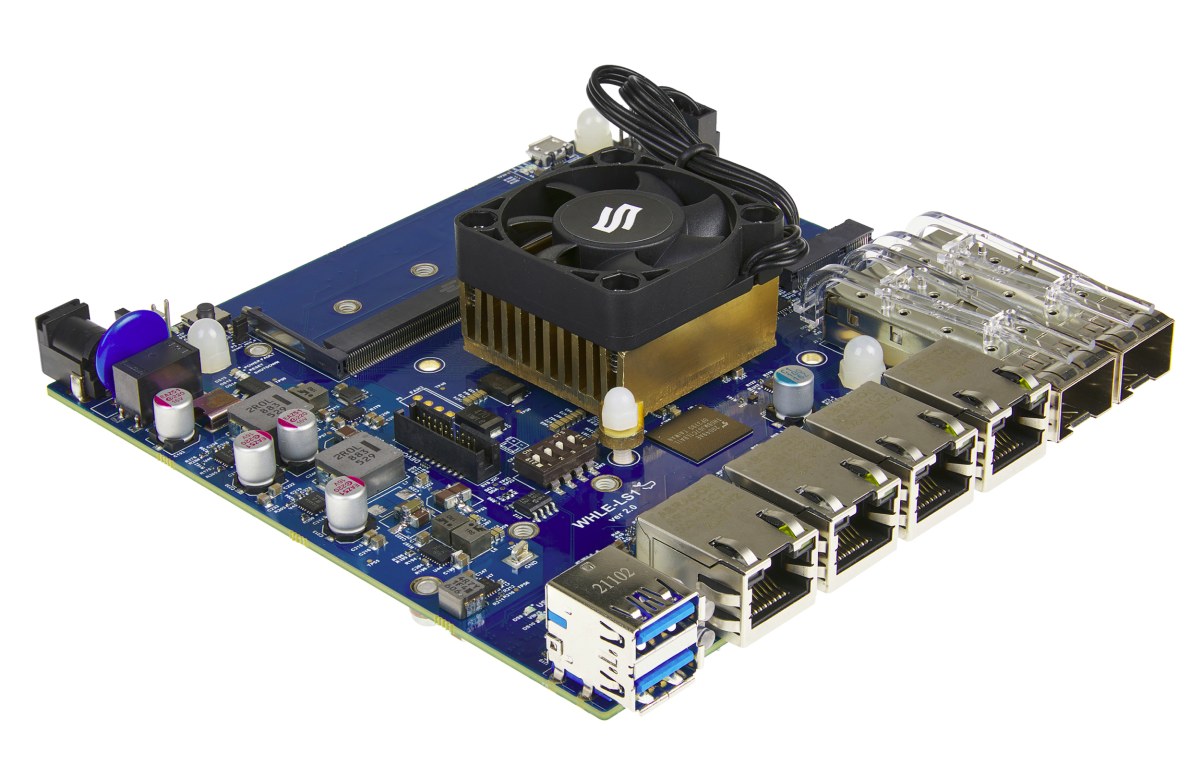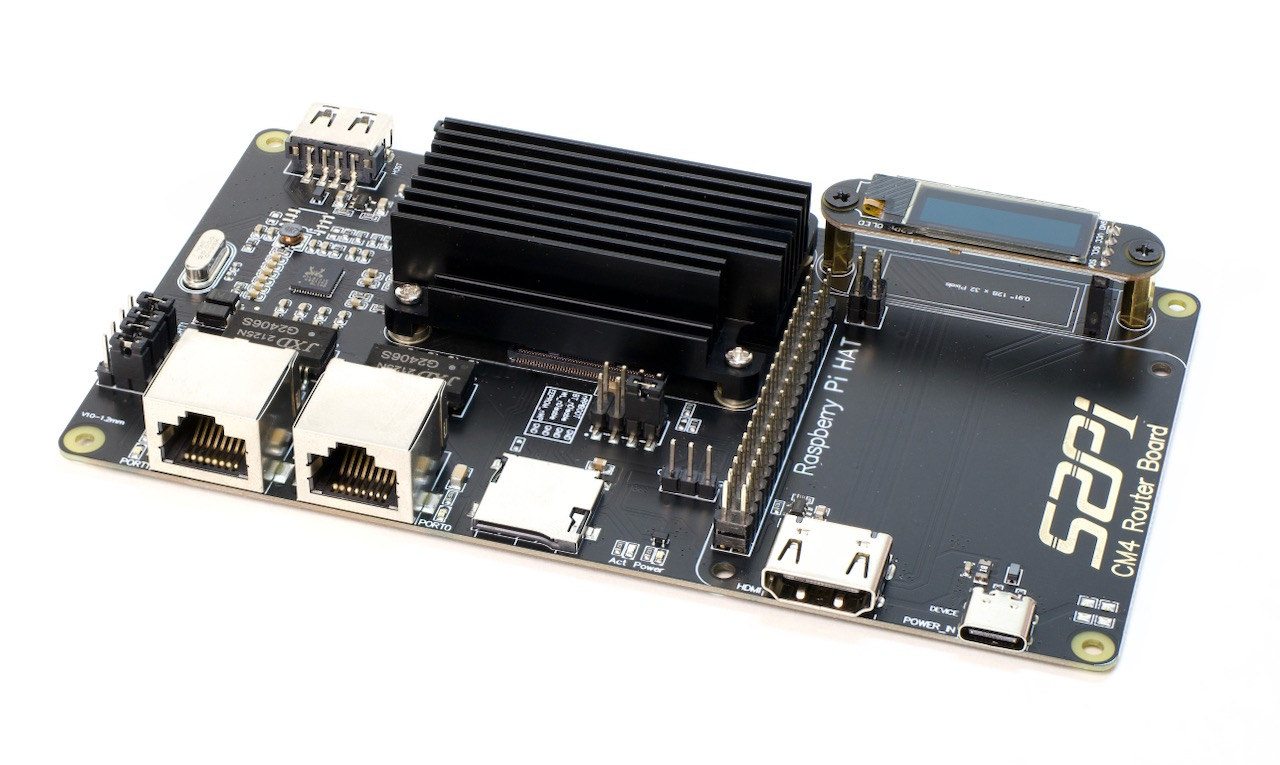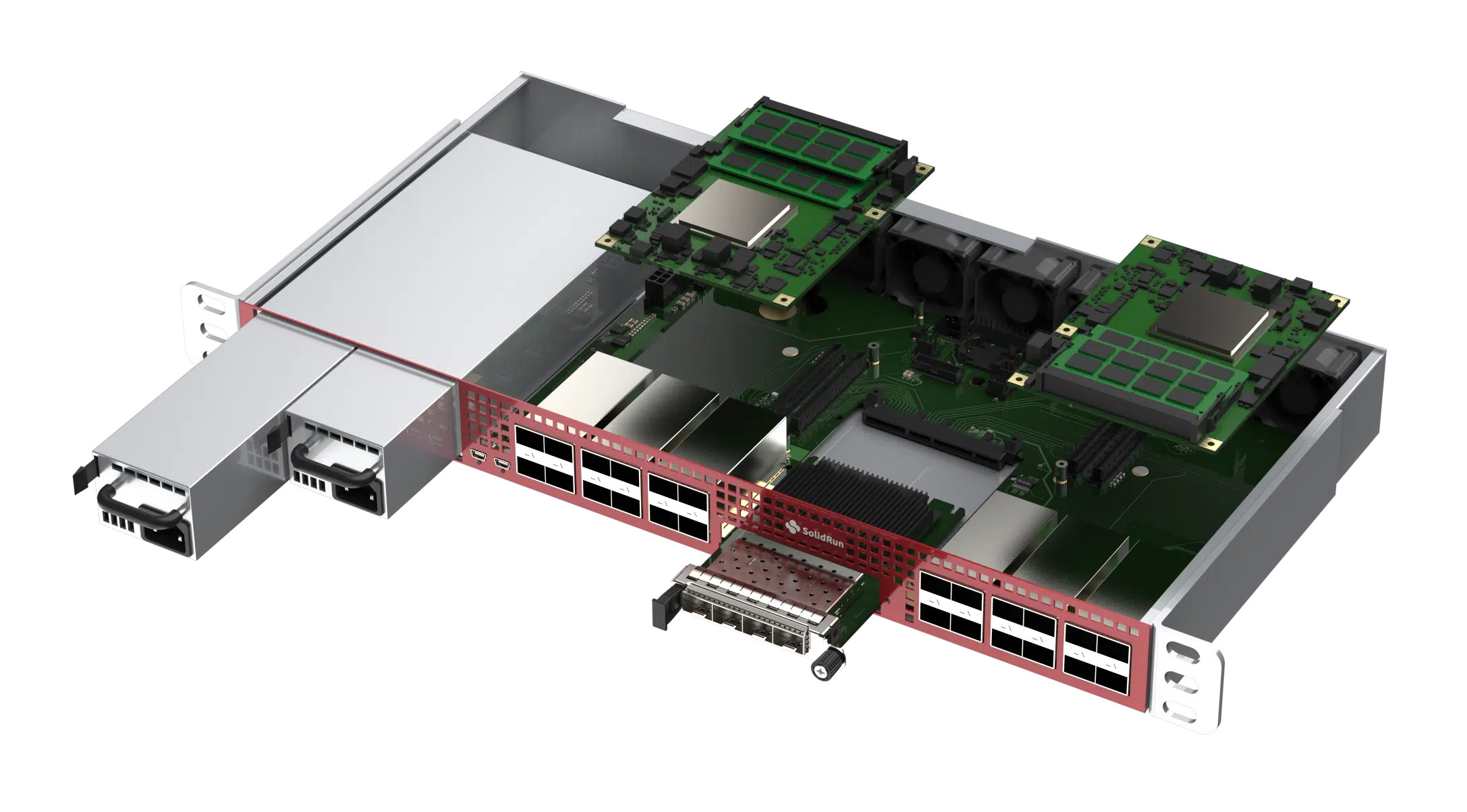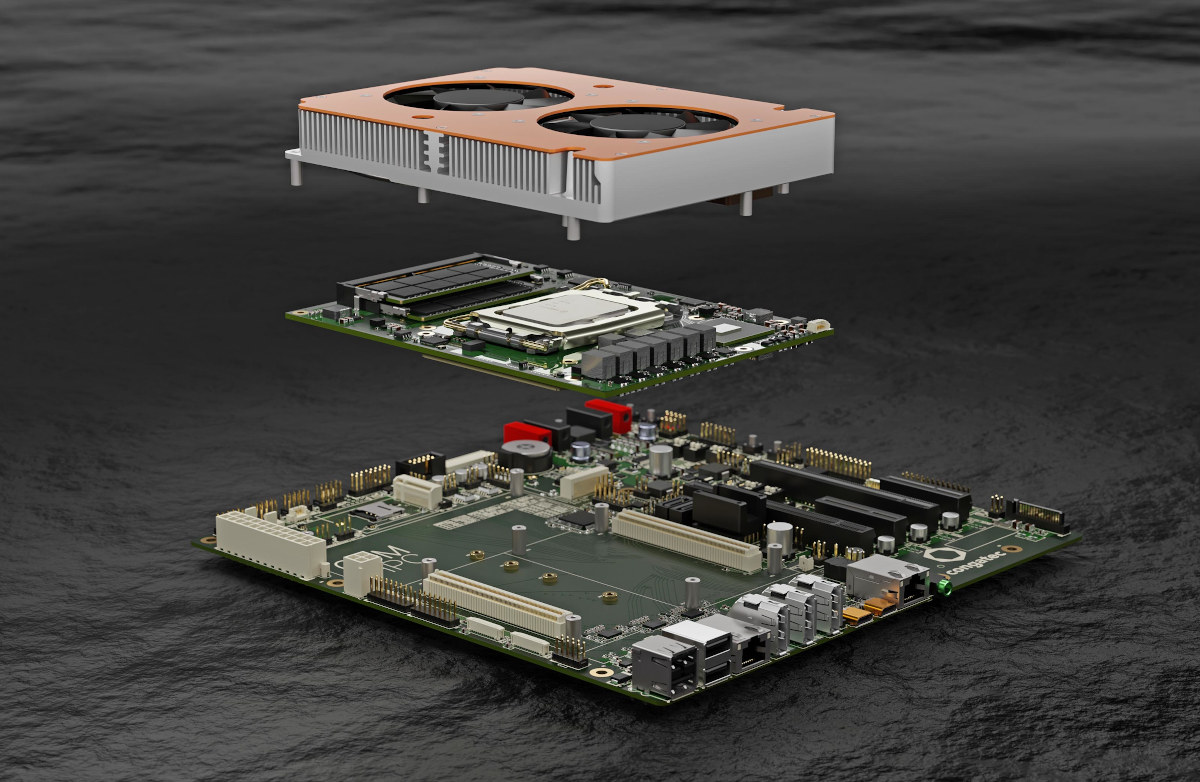Powered by an Intel Celeron J6412 quad-core Elkhart Lake processor, the Jetway MI05-0XK thin mini-ITX networking board is equipped with six 2.5GbE ports, up to 16GB RAM via a single SO-DIMM socket, as well as M.2 sockets for storage, WiFi and/or cellular connectivity, some serial ports, and an optional HDMI port for video output. Four variants are offered: the standard MI05-00K model without eMMC flash nor TPM, the MI05-02K with a TPM 2.0 chip, the MI05-03K with a 32GB eMMC flash, and finally the MI05-07K with both the TPM 2.0 security chip and 32GB eMMC flash. Jetway MI05-0XK specifications: SoC – Intel Celeron J6412 quad-core Elkhart Lake processor @ 2.0 GHz / 2.6GHz (Burst frequency) with 1.5MB cache, 16 EU Intel UHD Graphics; 10W TDP System Memory – Up to 16GB DDR4-3200 via SO-DIMM socket Storage 1x SATA III (6 Gb/s) port 1x M.2 M-key 2242 SATA/PCIe Gen.3 x2 interface […]
Renesas RZ/N2L Arm Cortex-R52 MPU targets industrial Ethernet and TSN
Renesas RZ/N2L is an Arm Cortex-R52 microprocessor (MPU) family for industrial Ethernet communication equipped with an integrated TSN-compliant 3-port Gigabit Ethernet switch and an EtherCAT slave controller. The new processors also support other major industrial network communication protocols such as EtherCAT, PROFINET RT, EtherNet/IP, and OPC UA, as well as the new PROFINET IRT (Isochronous real-time) that allows deterministic communication with cycle times down to 31.25 µs and one µs of jitter. Renesas RZ/N2L key features and specifications: CPU – Arm Cortex-R52 @ up to 400MHz with 16KB I-cache with ECC, 16KB D-cache with ECC Memory Tightly coupled memory – 256KB with ECC Internal RAM – 1.5MB with ECC Octa/Quad SPI for HyperRAM, HyperFLASH, SRAM, SDRAM Networking Ethernet L2 switch: 3x external ports with Gigabit support TSN support (IEEE 802.1AS-2020, IEEE 802.1Qbv/802.3br, IEEE 802.1Qbu, etc.) Network redundancy support (DLR, PRP) EtherCAT slave controller Industrial Ethernet – EtherCAT, PROFINET RT/IRT, EtherNet/IP, […]
Beelink SER5 Review – An AMD Ryzen 5 5600H mini PC tested with Windows 11, Ubuntu 22.04
New to arrive in the Beelink SER lineup is the SER5 marketed as a ‘SER PRO’ and features one of last year’s AMD Ryzen 5000 H-series processors typically used in high-performance productivity and gaming laptops. Beelink kindly sent one for review and I’ve looked at performance running both Windows 11 and Ubuntu 22.04. Beelink SER5 Hardware Overview The Beelink SER5 physically consists of a 126 x 113 x 42mm (4.96 x 4.45 x 1.65 inches) square metal case. As an actively cooled mini PC, it uses AMD’s 7 nm Zen 3 Ryzen 5 5600H Cezanne processor which is a six-core 12-thread 3.3 GHz mobile processor boosting to 4.2 GHz with Radeon Graphics. The front panel has an illuminated power button, a 3.5mm headphone jack, a Type-C USB 3.1 port with Alternate Mode, dual USB 3.1 ports, and a reset pin-hole ‘CLR CMOS’. The rear panel includes a gigabit Ethernet port, […]
ACTAMID M8S – An Intel Pentium N6005 palm-sized PC with dual Gigabit Ethernet, 3x HDMI ports (Crowdfunding)
ACTAMID M8S is a palm-sized 3.4-inch mini PC powered by an Intel Pentium N6005 Jasper Lake processor with up to 16GB LPDDR4 memory, 1TB M.2 2242 SSD. The M8S is bigger than the recently announced 2.7-inch PIX NII mini PC based on the same processor, but that’s for a good reason since it offers more ports with three HDMI outputs, dual Gigabit Ethernet, and three USB 3.0 ports. The mini PC also features WiFi 6 and Bluetooth 5.2 wireless connectivity, a quiet fan, and a 7-color LED backlight for good effects… Win Element Technology Co., Ltd, the Hong Kong company owning the ACTAMID brand, says the mini PC ships preinstalled with an activated version of Windows 11, but also supports Linux distributions such as Ubuntu 20.04. ACTAMID M8S specifications: SoC – Intel Pentium N6005 quad-core processor @ 2.0GHz / 3.3GHz (Turbo) with Intel UHD graphics @ up to 900 MHz; […]
Conclusive Engineering WHLE-LS1 networking SBC offers 4x GbE, 2x 10GbE SFP+ cages
Conclusive Engineering WHLE-LS1 is a networking SBC powered by a choice of NXP Layerscape LS1xx8A Cortex-A72 or Cortex-A53 communication processors with four Gigabit Ethernet ports, two SFP+ cages capable of up to 10Gbps data rates. The board also features one SO-DIMM socket for up to 32GB DDR4, up to 64GB eMMC flash, M.2 PCIe sockets for NVMe SSDs, USB 3.0 host and USB 2.0 device ports, an RTC with backup battery, as well as serial and JTAG debug interfaces. WHLE-LS1 specifications: SoC (one or the other) WHLE-LS1026A – NXP Layerscape LS1026A 2x Arm Cortex-A72 @ 1.8GHz with DPAA package processing engine WHLE-LS1046A – NXP Layerscape LS1046A 4x Arm Cortex-A72 @ 1.8GHz with DPAA package processing engine WHLE-LS1048A – NXP Layerscape LS1048A 4x Arm Cortex-A53 @ 1.6GHz with DPAA2 package processing engine WHLE-LS1088A – NXP Layerscape LS1088A 8x Arm Cortex-A53 @ 1.6GHz with DPAA2 package processing engine System Memory – 1x […]
52Pi CM4 Router Board also features HDMI, 40-pin Raspberry Pi HAT header, and OLED display
We’ve already seen compact Raspberry Pi CM4 based router boards with two Ethernet ports from DFRobots, Seeed Studio, and MCUZone. 52Pi CM4 Router Board expands on the same principle but also offers HDMI output, a 40-pin GPIO header for Raspberry Pi HAT expansion boards, and a small OLED information display. The board also includes two Gigabit Ethernet, plus the WiFi and Bluetooth connectivity from the Raspberry Pi CM4, and the extra features make the board larger (146x50mm) than competitors. But that makes the platform that much more flexibly, and can be used as a gateways for all sorts of projects thanks to the wide range of Raspberry Pi HAT available in the market. 52Pi CM4 Router Board (EP-0146) specifications: Compatible with Raspberry Pi Compute Module 4 series Storage – MicroSD card slot (only used with Raspberry Pi CM4 Lite) Video Output – HDMI 2.0 port up to 4Kp60 Display – […]
SolidRun introduces SolidWAN software-defined edge network hardware with NXP LX 16-core Cortex-A72 SoCs
SolidRun has launched two SolidWAN Linux-based system-level solutions for software-defined wide area networks and network security applications with the SolidWAN Single LX2162 based on NXP LX2162 16-core Cortex-A72 SoC designed for small offices (SoHo) and SMBs, and the SolidWAN Dual LX2160 equipped with two NXP LX2160A 16-core Cortex-A72 networking processors targetting enterprise and edge data center applications. SolidWAN Single LX2162 Hardware specifications: SoC – NXP Layerscape LX2162A 16-core Arm Cortex A72 processor @ up to 2GHz System Memory – Up to 32GB DDR4 Storage – 8GB eMMC flash, MicroSD card slot Networking 8x dedicated Gigabit Ethernet ports 2x SFP 10GbE cages 2x SFP 25GbE cages USB – 1x USB 3.0 port Expansion card I/Os Mini PCIe socket with SIM holder for 4G LTE cellular connectivity Mini PCIe socket for WiFi AP mPCIe module Management USB to STM32 for remote management RunBMC compliant socket Development and Debug interfaces – Mini USB, […]
conga-HPC/uATX is a micro-ATX board for COM-HPC Client Type modules
congatec has just introduced the conga-HPC/uATX micro-ATX carrier board designed for COM-HPC Client modules size A, B, and C. The board is vendor independent since it is based on the COM-HPC and micro-ATX standards and designed for embedded long-term availability of at least seven years. That means the micro-ATX carrier board works congatec solutions such as the high-end conga-HPC/cALS COM-HPC Client Size C module with up to a 16-core Intel Core i9 Alder Lake-S processor or the more power-efficient conga-HPC/cALP COM-HPC Client Size A modules with Intel Celeron 7305E processor, as well as similar solutions from ADLINK Technology, Advantech, Portwell, and other vendors. conga-HPC-/uATX carrier board specifications: Compatible with COM-HPC Client Type Modules (Size A: 95 x 120mm, Size B: 120 x 120mm, and Size C: 160 x 120mm) with CPU and memory sockets Video Output 3x DP++ with 8.1 Gbps Re-driver 1x eDP (optional for LVDS) Audio HDA codec […]


